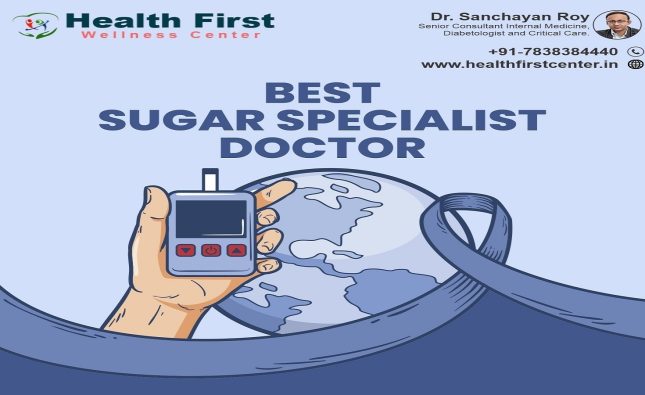
Introduction
Telemedicine plays a crucial role in improving patient-doctor communication through various channels. From video conferencing to mobile apps, texting, and email, telemedicine offers a range of tools that enhance communication and streamline the healthcare process for both patients and healthcare providers.
Video conferencing is one of the key ways telemedicine enhances doctor-patient communication. Through virtual consultations, patients can connect with their healthcare providers from the comfort of their own homes, saving time and eliminating the need for travel. This not only improves accessibility for patients in remote areas but also offers convenience and time-saving benefits for all individuals involved.
Mobile apps have also revolutionized the way patients access their medical records and information. With just a few taps on their smartphones, patients can securely view their health data, test results, and treatment plans, empowering them to take an active role in their healthcare journey. This easy access to information fosters transparency and trust between patients and doctors.
Texting and email have become efficient communication tools in the realm of telemedicine. Patients can easily reach out to their healthcare providers with questions, concerns, or updates, receiving timely responses that help them stay informed and engaged in their care. These channels of communication streamline the healthcare process, ensuring that important information is shared in a timely manner.
Virtual consultations offer convenience and time-saving benefits for patients, allowing them to receive medical advice and treatment without the need to visit a physical clinic. This not only saves patients time and money but also reduces the burden on healthcare facilities, making it easier for patients to access the care they need.
Enhanced patient education through telemedicine platforms
Telemedicine platforms play a crucial role in enhancing patient education and engagement. Virtual consultations provide patients with easy access to healthcare providers, regardless of their location. This is particularly beneficial for individuals in remote areas who may have limited access to medical services.
Through video conferencing and mobile apps, patients can receive personalized education about their conditions, treatment options, and preventive care measures. This interactive approach to healthcare empowers patients to make informed decisions about their health and well-being, leading to better outcomes and improved quality of life.
Efficiency in communication is another key benefit of telemedicine platforms. With the ability to text or email their healthcare providers, patients can quickly and easily share information, ask questions, or request appointments. This streamlined communication process ensures that patients receive the care they need in a timely manner, improving overall satisfaction and engagement.
Telemedicine platforms provide convenience for both patients and doctors, allowing for flexible scheduling, easy access to medical records, and efficient communication. By leveraging these tools, healthcare providers can deliver high-quality care that is tailored to the individual needs and preferences of each patient, leading to better health outcomes and improved patient satisfaction.

Utilizing telemedicine for chronic disease management
Telemedicine plays a crucial role in chronic disease management, offering virtual consultations with healthcare providers that can help patients better manage their conditions. Through mobile apps, patients can easily access their medical records, track their symptoms, and communicate with their healthcare team, leading to improved outcomes and quality of life.
Video conferencing enhances communication between patients and doctors, allowing for real-time interactions that can help healthcare providers monitor patients’ progress, adjust treatment plans, and provide ongoing support. This personalized approach to care ensures that patients receive the attention and guidance they need to effectively manage their chronic conditions.
Texting and email provide additional benefits for patients with chronic diseases, allowing for efficient communication that can help patients stay on track with their treatment plans, medications, and lifestyle modifications. By leveraging these communication channels, healthcare providers can offer ongoing support and guidance that empowers patients to take control of their health and well-being.
Overall, telemedicine offers a comprehensive approach to chronic disease management that combines virtual consultations, mobile apps, video conferencing, and messaging tools to improve patient outcomes and enhance the patient experience.
Remote consultations for mental health services
Telemedicine has revolutionized the delivery of mental health services, offering remote consultations that provide convenience and accessibility for patients. Through virtual consultations, patients can connect with mental health professionals from the comfort of their own homes, eliminating barriers to care and ensuring that individuals receive the support they need.
Video conferencing enhances communication between patients and mental health providers, allowing for real-time interactions that can help providers assess patients’ mental health status, provide counseling and therapy, and monitor progress over time. This personalized approach to care ensures that patients receive the support and guidance they need to improve their mental well-being.
Mobile apps provide easy access to medical records and information, allowing patients to track their symptoms, monitor their progress, and access resources and tools that can support their mental health journey. By leveraging these digital tools, patients can take an active role in their treatment and recovery, leading to better outcomes and improved quality of life.
Texting and email offer additional benefits for patients seeking mental health services, providing efficient communication channels that can help patients stay connected with their providers, share updates, and access support in times of need. These communication tools streamline the delivery of care, ensuring that patients receive timely and effective support for their mental health concerns.
Overall, telemedicine offers a comprehensive approach to mental health services that combines remote consultations, video conferencing, mobile apps, and messaging tools to improve patient outcomes and enhance the patient experience.

Telemedicine as a tool for preventive care
Telemedicine plays a crucial role in preventive care, offering virtual consultations with healthcare providers that can help patients stay healthy and proactive about their well-being. Through mobile apps, patients can easily access their medical records, track their preventive screenings, and communicate with their healthcare team, leading to improved health outcomes and early detection of potential health issues.
Video conferencing enhances patient-doctor communication for preventive care, allowing for real-time interactions that can help healthcare providers assess patients’ risk factors, provide personalized recommendations, and monitor progress over time. This personalized approach to care ensures that patients receive the guidance and support they need to stay healthy and prevent future health problems.
Texting and email options increase efficiency and convenience for patients seeking preventive care, providing easy communication channels that can help patients stay on track with their preventive screenings, vaccinations, and lifestyle modifications. By leveraging these digital tools, healthcare providers can offer ongoing support and guidance that empowers patients to take control of their health and well-being.
Overall, telemedicine offers a comprehensive approach to preventive care that combines virtual consultations, mobile apps, video conferencing, and messaging tools to improve patient outcomes and promote a proactive approach to health and wellness.
Improved communication between healthcare providers and patients
Telemedicine enhances communication between healthcare providers and patients, offering virtual consultations that can help patients access care and support in a timely manner. Through mobile apps, patients can easily access their medical records, communicate with their healthcare team, and stay informed about their treatment plans, leading to improved outcomes and patient satisfaction.
Video conferencing provides efficient and convenient patient-doctor interactions, allowing for real-time communication that can help healthcare providers assess patients’ needs, provide guidance and support, and monitor progress over time. This personalized approach to care ensures that patients receive the attention and care they need to stay healthy and engaged in their treatment.
Texting and email options improve accessibility and communication between appointments, providing patients with easy channels to reach out to their healthcare providers, ask questions, or share updates. By leveraging these communication tools, healthcare providers can offer ongoing support and guidance that empowers patients to take an active role in their care and well-being.
Overall, telemedicine offers a comprehensive approach to communication between healthcare providers and patients that combines virtual consultations, mobile apps, video conferencing, and messaging tools to improve patient outcomes and enhance the patient experience.
Conclusion
In conclusion, telemedicine plays a crucial role in improving patient-doctor communication through virtual consultations, mobile apps, video conferencing, and messaging tools. By leveraging these digital tools, healthcare providers can offer personalized care, improve accessibility to medical records, streamline communication, and enhance the overall patient experience. Telemedicine has the potential to revolutionize the way healthcare is delivered, offering convenience, efficiency, and improved outcomes for patients and healthcare providers alike.










